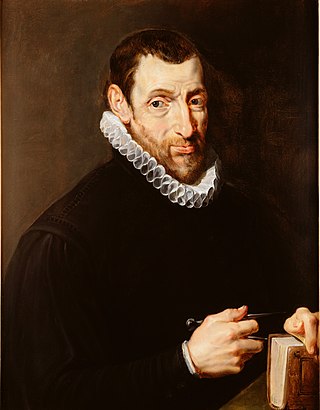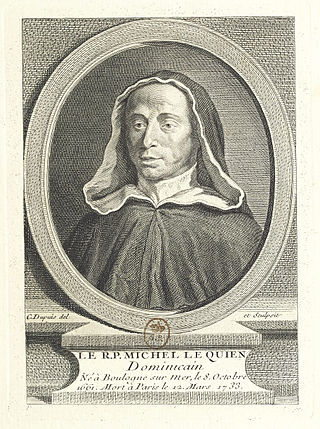
Maximus the Confessor, also spelled Maximos, otherwise known as Maximus the Theologian and Maximus of Constantinople, was a Christian monk, theologian, and scholar.

Leo Allatius was a Greek scholar, theologian, and keeper of the Vatican library.
The Apostolic Fathers, also known as the Ante-Nicene Fathers, were core Christian theologians among the Church Fathers who lived in the 1st and 2nd centuries AD who are believed to have personally known some of the Twelve Apostles or to have been significantly influenced by them. Their writings, though widely circulated in early Christianity, were not included in the canon of the New Testament. Many of the writings derive from the same time period and geographical location as other works of early Christian literature which came to be part of the New Testament.

Christophe Plantin was a French Renaissance humanist and book printer and publisher who resided and worked in Antwerp. He established in Antwerp one of the most prominent publishing houses of his time, the Plantin Press. It played a significant role in making Antwerp a leading centre of book publishing in Europe. The publishing house was continued by his successors until 1867.

Methodius of Olympus was an early Christian bishop, ecclesiastical author, and martyr. Today, he is honored as a saint and Church Father; the Catholic Church commemorates his feast on June 20.

Alonso Cano Almansa or Alonzo Cano was a Spanish painter, architect, and sculptor born in Granada.

François Combefis was a French Dominican patrologist. He published previously unedited works by John Chrysostom.
Raymundus Jordanus, best known by his Latin nom de plume Idiota, though this identification is disputed by some, was a medieval Catholic writer whose identity remained unknown for some centuries.

Michel Le Quien was a French historian and theologian.
Andrea Gallandi was an Italian Oratorian and patristic scholar.
Titus of Bostra was a Christian theologian and bishop. Sozomen names Titus among the great men of the time of Constantius.
Jean-Baptiste Cotelier or Cotelerius was a Patristic scholar and Catholic theologian.
Antoine-Augustin Touttée was a French Benedictine scholar of the Maurist Congregation.

A catena is a form of biblical commentary, verse by verse, made up entirely of excerpts from earlier Biblical commentators, each introduced with the name of the author, and with such minor adjustments of words to allow the whole to form a continuous commentary.
Minuscule 87, CL22 (Soden), is a Greek minuscule manuscript of the New Testament, on parchment leaves. Palaeographically it has been assigned to the 11th century. Formerly it was dated to the 12th century.
Severian, Bishop of Gabala in Syria, was a popular preacher in Constantinople from around 400 until 404. He became the enemy of John Chrysostom and helped condemn him at the Synod of the Oak.
Antonius Agellius, C.R. or Antonio Agellio (1532–1608) was bishop of Acerno and a member of the Theatines, born in Sorrento. He was an editor of the Clementine edition of the Latin Vulgate.

Henri Cordier was a French linguist, historian, ethnographer, author, editor and Orientalist. He was President of the Société de Géographie in Paris. Cordier was a prominent figure in the development of East Asian and Central Asian scholarship in Europe in the late 19th and early 20th century. Though he had little actual knowledge of the Chinese language, Cordier had a particularly strong impact on the development of Chinese scholarship, and was a mentor of the noted French sinologist Édouard Chavannes.

Balthasar Moretus or Balthasar I Moretus was a Flemish printer and head of the Officina Plantiniana, the printing company established by his grandfather Christophe Plantin in Antwerp in 1555. He was the son of Martina Plantin and Jan Moretus.

Balthasar van Meurs or Balthazar van Meurs was a Flemish painter and draughtsman. He was a member of a family of printers and publishers which was connected to the Moretus family, which operated the Plantin Press in Antwerp. He was principally a painter of portraits and his principal patrons were the Moretus family.












